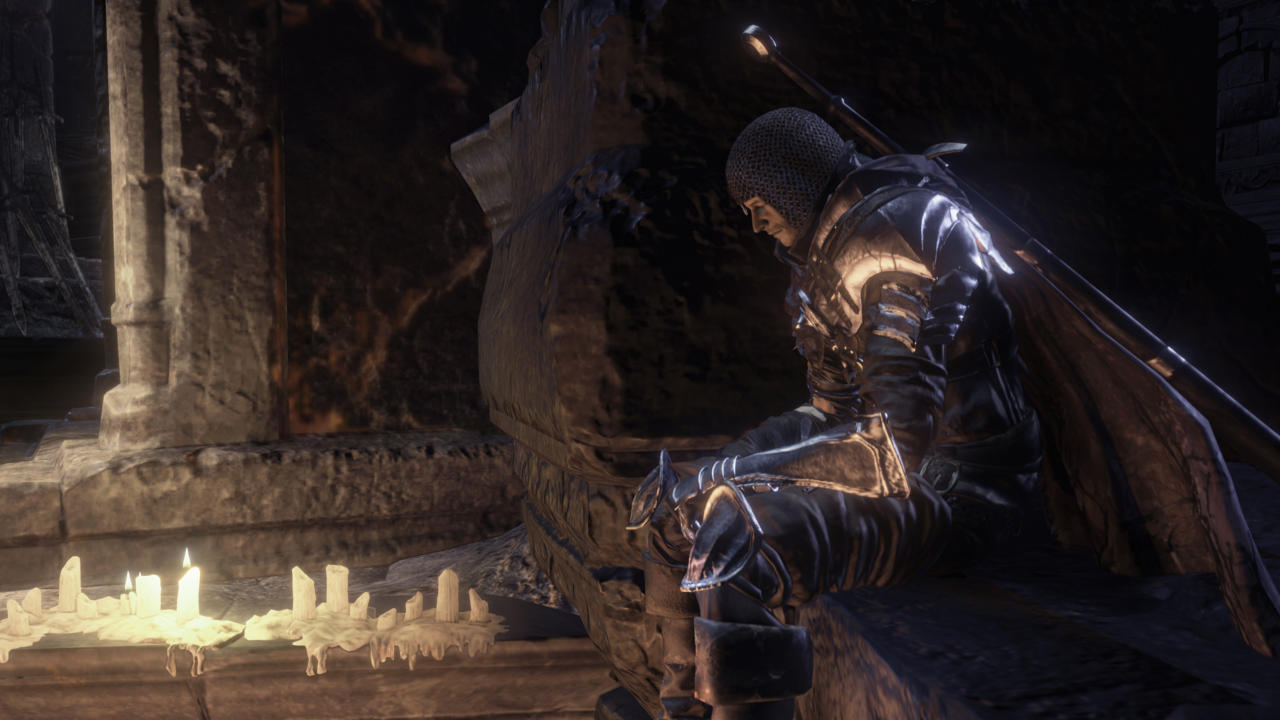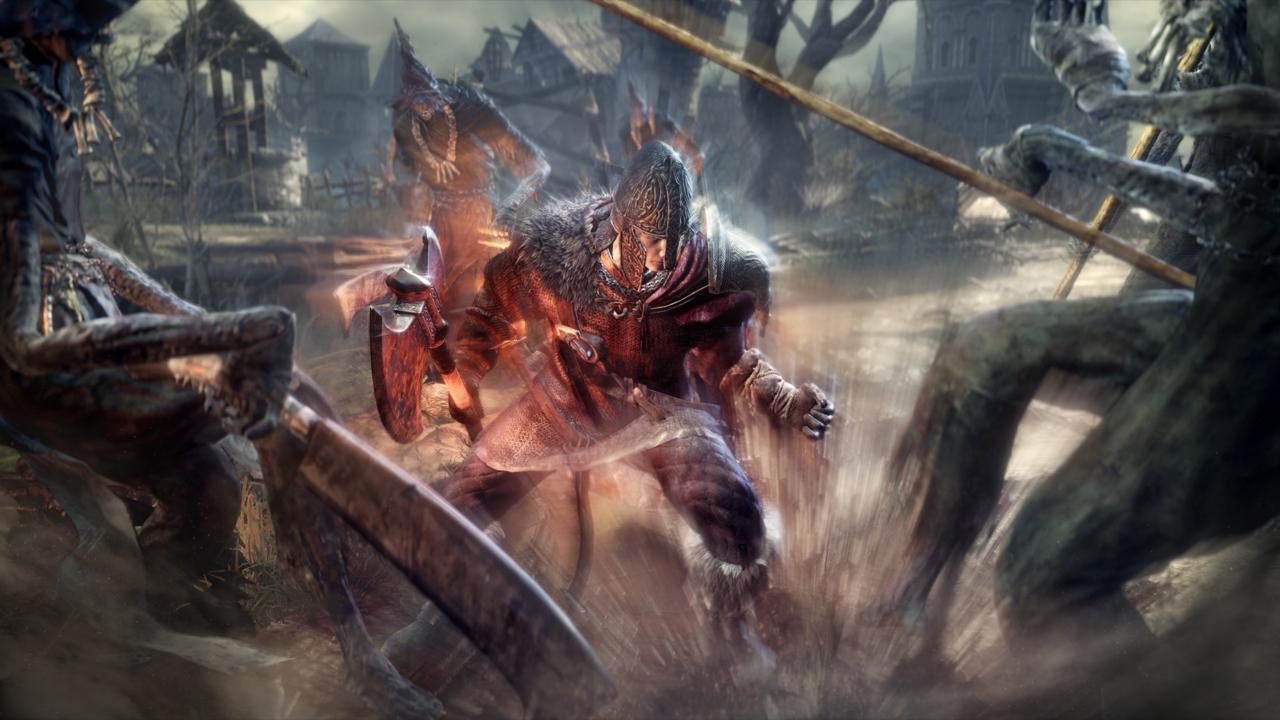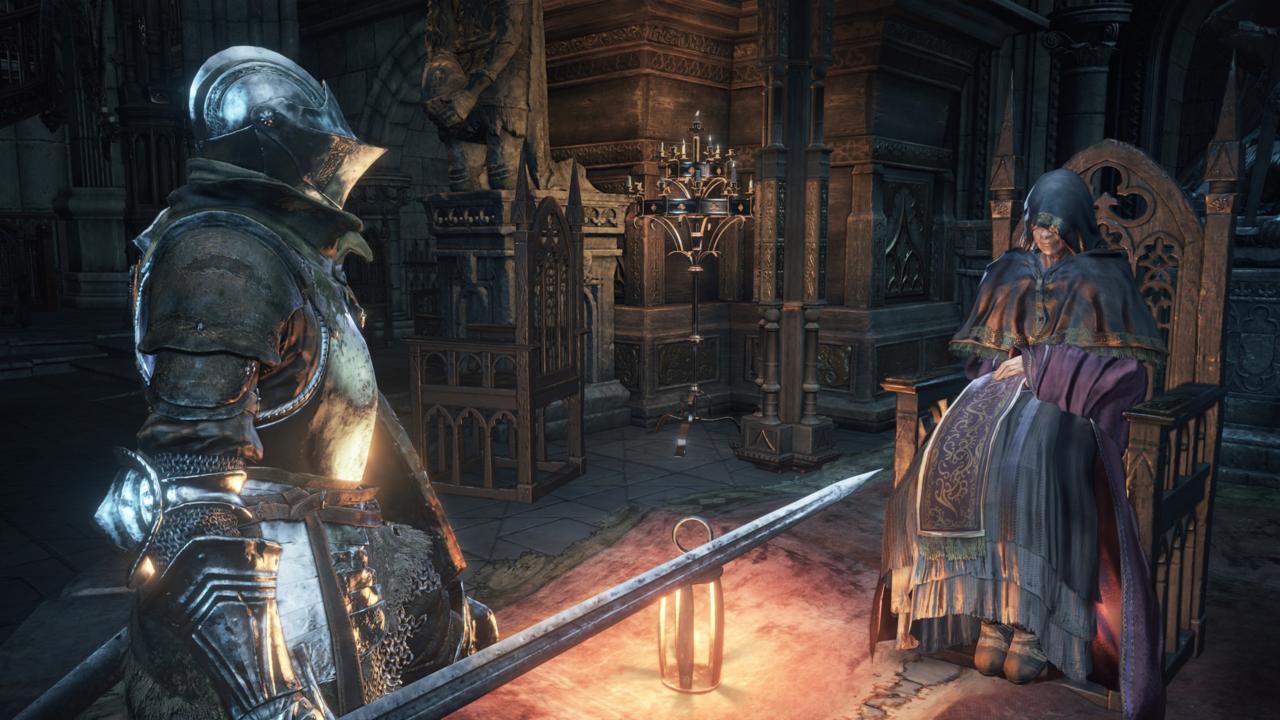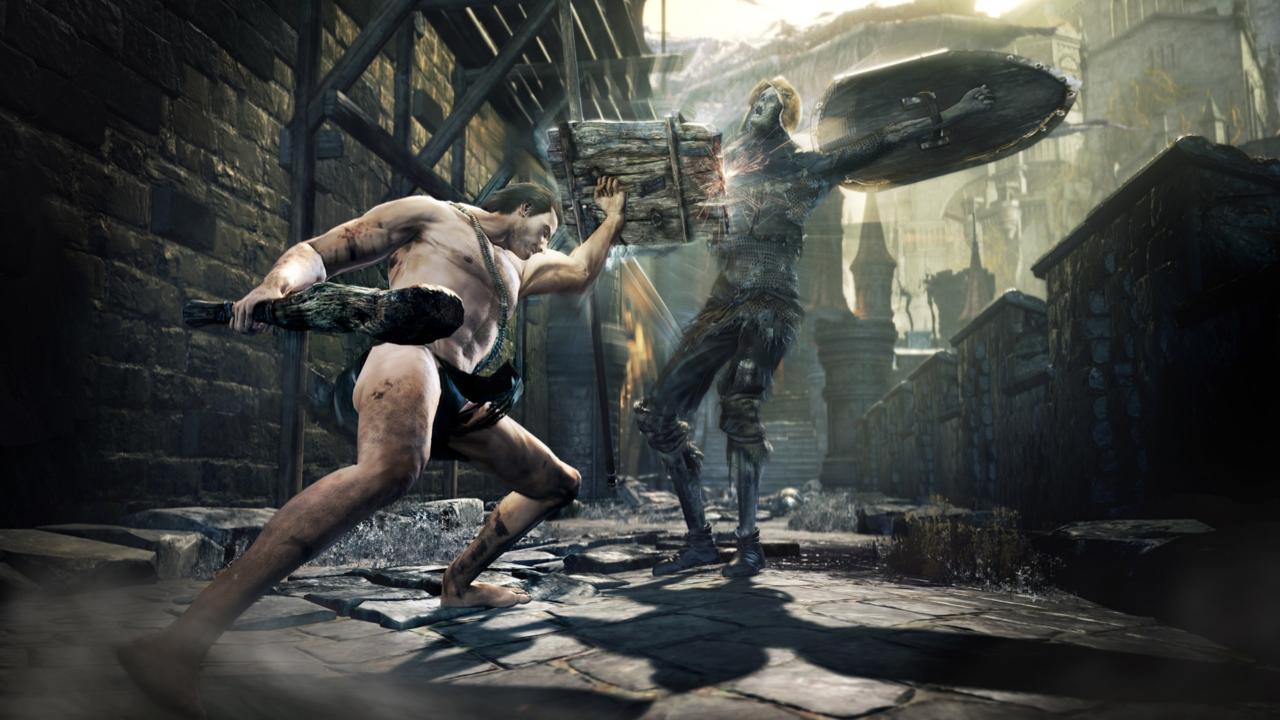Dark Souls 3: 10 Essential Tips For Newcomers
GameSpot may receive revenue from affiliate and advertising partnerships for sharing this content and from purchases through links.
Dark Souls 3 demands careful movements and strategy. Its explanations of gameplay systems and mechanics are vague. The game instead leaves players to figure out the intricacies over many hours of gameplay. However, with just a few small considerations you can significantly reduce your chances of seeing that soul-crushing “You Died” screen.
We’ve collected 10 essential tips to help you in your journey through the kingdom of Lothric. Some of these are general best practice rules to guide you through the game, while others shed more light on specific systems.
Experiment With All Classes
Dark Souls 3, like its predecessors, allows players to build characters that suit different play styles. While it may seem natural to pick a character wielding a sword and shield at the start, you may find over time that you prefer ranged attacks or wish you were a quick-footed thief. Don't be afraid to restart the game and experiment with another class.
The first area, Cemetery of Ash, isn't particularly long, which makes for a good zone to get a feel for the mechanics. Take the opportunity to cycle through a few of the different classes, because doing so will allow you to move forward with confidence that your character is well suited to you. We’d recommend going from grave to shrine, as that will also give you a taste one of the harder encounters.
Learn From Mistakes
Class designations in Dark Souls 3 aren't as rigid as they initially seem. Generally they just determine the stats you start with, adding more skill points to disciplines appropriate for the chosen class. A warrior will begin the journey with higher strength stats, for example, while a magician's numbers will be tweaked so the character is more miracle-capable from the outset. These boosts give you a running start down the character development path, but Dark Souls 3 is open enough to allow you to branch out. With enough souls, you can take your sword-and-board character and turn it into a pocket mage. If this is your plan, make sure you do it from the start and spread out your upgrades among the appropriate stat categories. As the game progresses, it takes considerably more souls to level up each time, so teaching your old dog new tricks becomes much harder.
Plan Your Work, Work Your Plan
To overcome the challenges Dark Souls 3 places in your path, you have to be studious. You need to observe the enemy, identify weak points and opportunities to attack, then seize on them without overextending. In each new enemy engagement, your immediate strategy should be defensive: raise your shield, stay mobile, observe your foe’s movement.
Making note of how enemy attacks look is vital because it allows you to find a safe distance, then counter-attack at the ideal moments. For Bloodborne players, this is a crucial point because Dark Souls 3 does not make concessions for offensive play. When you take damage, you can't recover it by immediately striking back as you can in Bloodborne, and you'll virtually never have enough Estus, which is main method of healing in Dark Souls 3, to make up for repeated missteps. Rewarding gambles is not built into the core of its gameplay. You are no longer a sentinel Hunter, you are the fragile Ashen One. Remember that.
Learn To Love Death
The world of Souls is all about cycles of death and rebirth; its greatest heroes understand this and use it to their benefit. If you respawn at a bonfire having learned what mistakes led to death, you should consider this a victory. It’s a small one, for sure, but an important one.
On your first playthrough, every new area will throw a different set of challenges at you, and it is natural--almost a given--that you’ll falter at these points. Similarly, it’s rare that you’ll beat a boss the first time around, so you should think about each initial encounter as a fact-finding mission. Limit yourself to using only Estus, so you’re not pointlessly wasting consumables that aren’t replenished at a bonfire. The biggest pitfall newcomers face is giving in to the thinking the game is cheap, too difficult, or not balanced properly. Everything is doable, it just requires strategy and, most importantly, determination. Dark Souls is only as difficult as you allow it to be,
Heal Effectively
Dark Souls 3 uses a number of gameplay systems from across the series but also introduces a few new ones. There are intricacies to the way health, focus, and stamina work that are not explained in a way that’s easy to understand. Much of it becomes evident as you get deeper into the game, but it’s nice to have a handle on it from the start. The red health bar has two states that correspond to whether your character is unkindled or kindled. When unkindled, you have less total health than when you are kindled. You can consume Embers to transform from a shrivelled undead to a kindled warrior coursing with fire. However, since Embers are in limited supply, it’s important to make the most of each one, so use one when your health is low instead of when it’s already at max. This extends the total size of the health bar and gives you a free refill. For Bloodborne players, it’s worth keeping in mind that Estus flasks are replenished at Bonfires, unlike Blood Vials. However, you’ll get considerably fewer uses out of them, so play smart.
Focus on Focus
The second of the three bars relates to Focus, which governs the use of Battle Arts--a new gameplay addition to the Dark Souls series. Many of the weapon classes have a unique ability associated with them. These range from a war cry that temporarily boosts attacks to a defensive stance that lets you parry to a quickstep that moves you behind enemies (ideal for the offensive style of Bloodborne players).
The amount of Focus used varies depending on the specific ability but, like health, the bar is replenished at Bonfires. It also has its very own blue Estus flask that can be used to top it up. To start with, each character can use an Estus flask four times, three times for health and once for focus. However, by speaking to the blacksmith at your shrine, you can redistribute these.
It doesn’t cost you anything to redistribute your Estus allotment, so keep in mind that you can change your gameplay strategy to match the situation you're preparing to encounter. If your plan is to go all out on a particular boss with normal attacks, you may want to move your entire allotment of Estus’ to health. Or if you feel like your skill is more important than health recovery, you can shift it to Focus.
Manage Stamina
The final of the three bars is stamina, which governs rolling, back steps, sprinting, blocking, and attacking. Stamina usage requires the most micromanaging as, if not given the proper attention, it can leave you in a lot of trouble. Many abilities are hindered if stamina is depleted, especially your range of movement, your defense, and your attacking ability. This means that when you’re attacking an enemy, pay attention to how much stamina you’re using, because if you spend all of it, you won’t be able to roll away quickly or hold up your leaving you at the mercy of the enemy.
Stamina recovers relatively quickly, so for the most part, it shouldn’t be a problem to keep on top of it. But it’s important to note two things; First, stamina is used when you’re holding your shield up and defending. If an enemy is unleashing a volley of attacks, turtling isn’t a good idea unless you know your attacker will finish before you run out of stamina and there won’t be an immediate follow-up. In many scenarios, a pre-emptive dodge may be the better option. The second thing to note is that your stamina recovery is slower when your shield is raised, so when you have a moment of safety, lower your shield to quickly recover stamina.
Don't Get Greedy
Souls are the currency of the game and can be exchanged for items, weapons, and armour, and can also be used for crafting and levelling up. They are accumulated by killing enemies, selling items, or finding the faded souls of fallen warriors. Use them or lose them! Upon death, all the souls in your possessions are dropped wherever the killing blow was struck. The good news is that you can return to that point and pick them up. The bad news is if you die again before you do so, they’re gone forever.
For this reason, it’s a good idea to avoid situations where you have a significant number of souls on you. Take every opportunity to cash them to level-up or buy consumables. At the same time, it’s important not to become too attached to Souls, as it can lead to making costly mistakes. As with with item pickups placed in the environments, be suspicious and cautious. It’ll save your neck more than a few times.
Know Your Limitations
Various spells, weapons, and armour have stat requirements that must be met before they can be wielded effectively. A character that doesn’t fulfill these requirements may still be able to equip an item, but it will be less effective when used. For a greatsword, for example, the time it takes to swing the weapon may be significantly increased. For a shield, it may take much longer to raise it and reduce less damage.
In the stat menu for each item, there is usually a number denoting the strength, dexterity, intelligence, or faith that you need to use it. If you haven’t reached that number, it will be red. Another thing to consider, particularly for weapons, s the scaling grade the item has in each of the aforementioned categories. The better the grade the more effective it will be as you level up that stat. So a rapier that has a B next to the dexterity stat will become even more powerful as you spend Souls to improve your dexterity. On the other hand, if a hammer has an E grading for strength, it may be worth finding an alternative as your strength gets higher.
Engage in Jolly Cooperation
Multiplayer is one of the most enjoyable aspects of the Dark Souls series, but it's also quite difficult to understand. Each Dark Souls 3 player inhabits their own world, but at times these overlap. The most frequent manifestations of multiplayer are in the soapstone messages and bloodstains. Orange writings on the ground are messages from other players, which can provide you with advice or warnings. Some players even use them to trick people, so beware. Bloodstains, meanwhile, can be touched to see the last few moments of another player’s life. This is a good way to scout upcoming dangers.
In your inventory you'll also find a White Sign Soapstone, which can be used to place a summoning point on the ground. Players in other worlds can interact with these to summon you. If you’re in human form (Embered) you’ll also see these white signs in your world, so you can recruit other players or NPCs to your cause. While in human form, players and NPCs can forcefully invade your world as Red Phantoms using Red Eye Orbs, and when this happens you’ll have to face them in combat. The rewards for defeating an invader include souls and Embers and new weapons.










